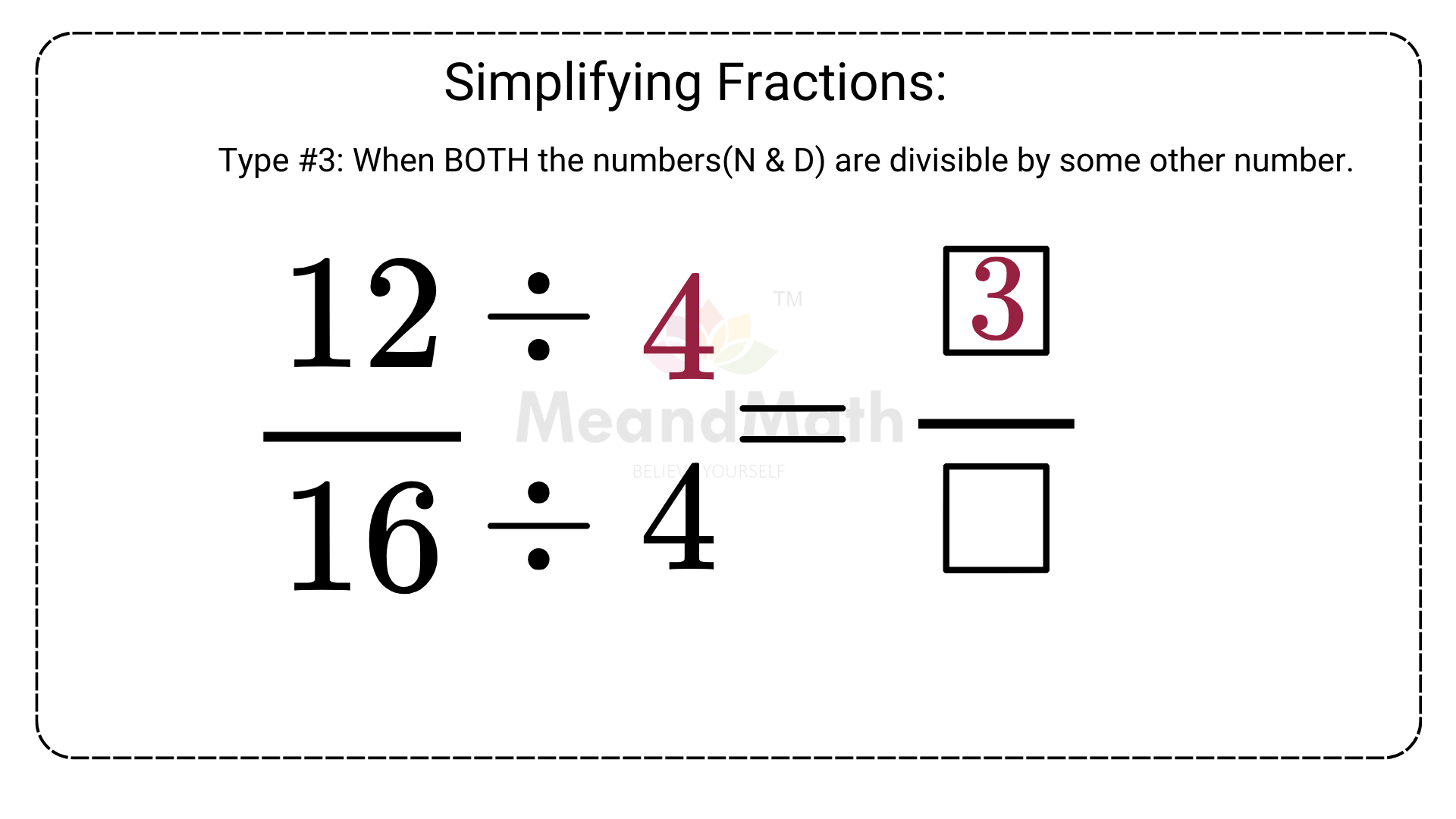Learning Checklist
Understanding Reducing Fractions
Finding Simplified/Simplest Form
Understanding Simplifying Fractions
If you get 3 equal slices of a 6 sliced pizza and 1 slice of a 2 sliced pizza, which one is greater?
Let’s go through an example.

Who do you think eats more?
Both eat equally.
Click through the slideshow to understand better.






Finding the Simplified form through Mathematical Approach
The simplified form of fractions is also called the reduced form or the lowest form of fraction.
To simplify any fraction, we divide both the numerator & the denominator by the same number.

We have divided the understanding based on some types to make it easier and faster to workout.
Type #1: When the bigger number is divisible by the smaller number.
Type #2: When both the numerator & the denominator have zeroes at the end.
Type #3: When both the numerator and denominator are divisible by some other number.
Type #4: Chain Simplification.
Click through the slideshow to understand how to simplify fractions.









Type #1: When the bigger number is divisible by the smaller number.
Type #1 method helps quickly simplify the fraction just by checking if the smaller number divides the bigger number completely.
For Example,
4/12 has 4 as the smaller number and 12 as the bigger number .
4 divides 12 completely.
Divide both the numerator & the denominator by 4.
4/12=1/3
4/12 reduces to 1/3.
Click through the slideshow to understand better.









Type #2: When both the numerator & the denominator have zeroes at the end.
Type #2 is the case when both the numerator & the denominator have zeroes at the end.
We divide by 10 to write the fraction in lowest form.
Remember: Dividing by 10 is just cancelling zeroes at the end from both the numerator & the denominator.








Type #3: When both the numerator and denominator are divisible by some other number.
You will get some fractions where the smaller number is not the divisor of the bigger number.
It will be done easily by the Type #3 method.
Follow the steps below to simplify fractions under type #3.
Step #1: Think of the common divisor . You can start with the common prime divisor.
Step #2: Divide both the numerator & the denominator by the common divisor.
A common divisor is also called a common factor.
For Example,
15/20
15 is the smaller number but is not the divisor of 20.(20 doesn’t come in the table of 15)
5 is the common divisor.
Divide both the numerator & the denominator by 5.
15/20=3/4
15/20 is reduced to 3/4.
Click through the slideshow to understand better.








Type #4: Multi-Step Simplification.
While simplifying fractions, you may get some fractions that are not getting simplified in a single step.
They need multi-steps to simplify.
To simplify fraction through multi-steps, follow the steps below.
Step #1: Take the smallest common divisor. Prime divisors are useful in this case.
Step #2: Repeat the step 1 until you get the simplest form.
Click through the slideshow to understand.












Examples:
to do
Test Your Understanding
Olympiad Level Questions
Practice Quiz(download meandmath practice app)
Still Stuck!
Book a free demo class & clear your doubts!
Related Topics
- Understanding Whole as a Percentage
- Simplifying Percentages
- FDP
- Finding 10%
- Finding 5%
- Finding % of an amount
- Percentage Increase & Decrease

